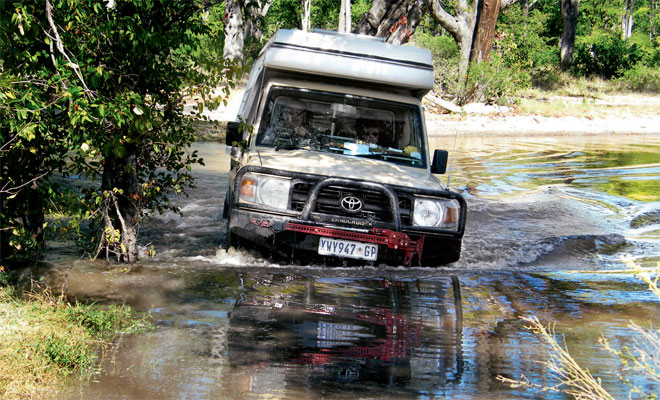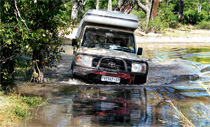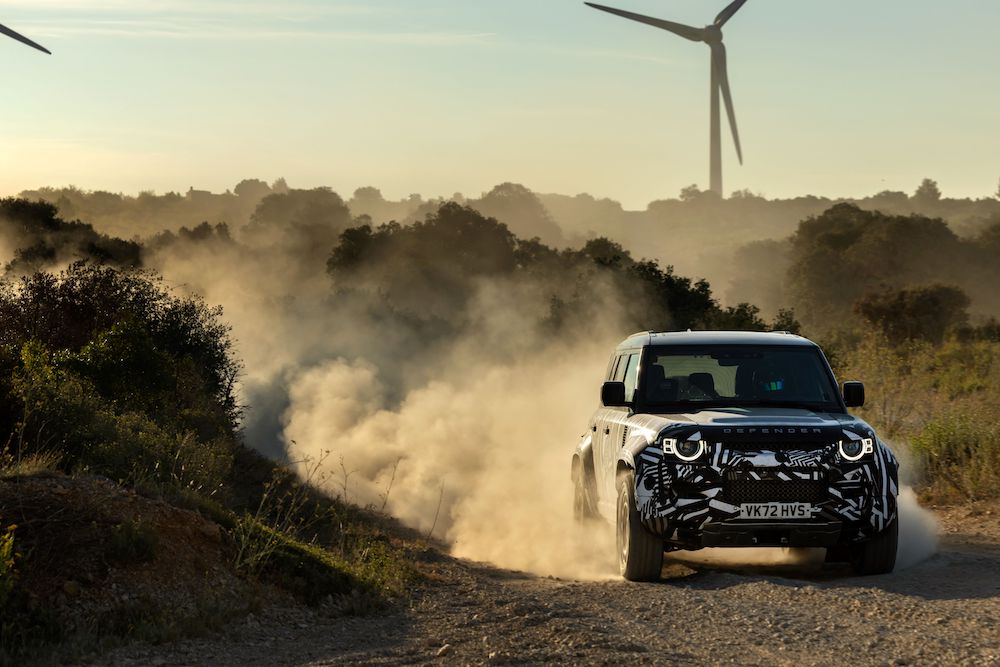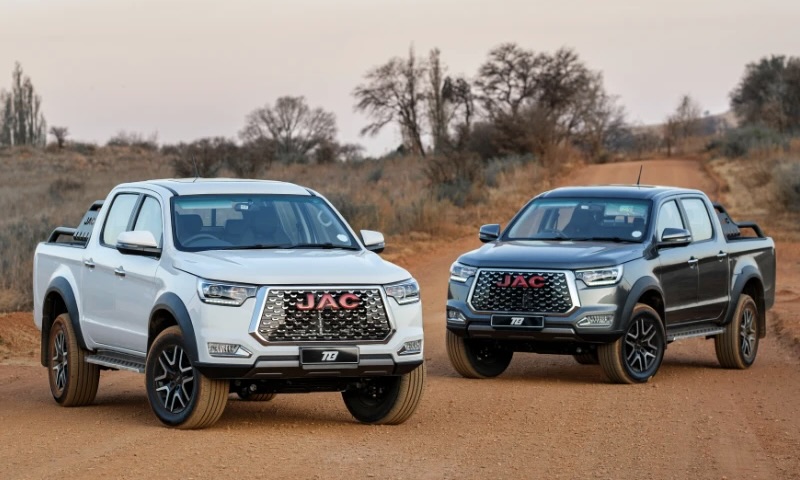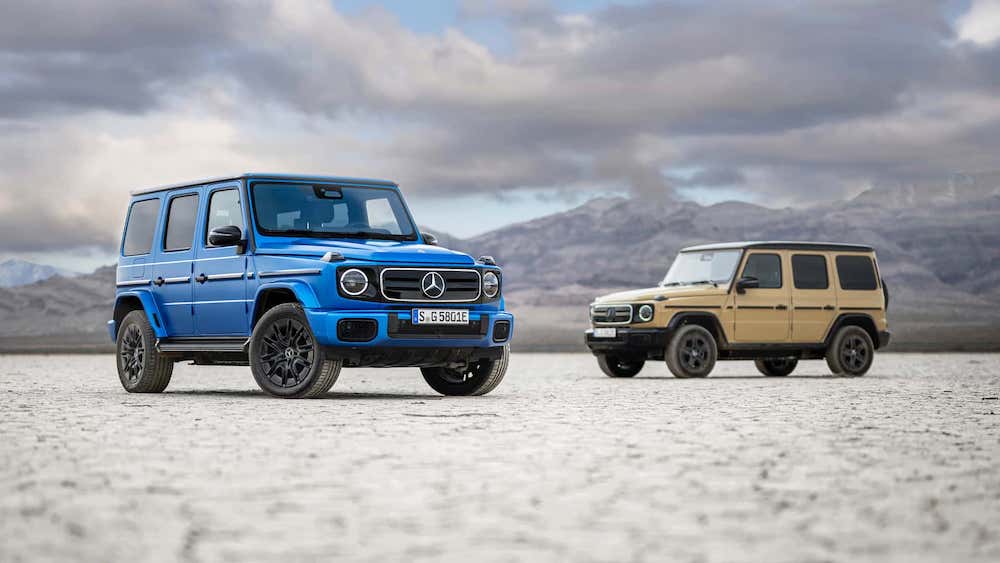Daunting water crossings. 4×4 recovery impasses. Poisonous snakes. Elephant herds that number more than 60. Bribe-demanding officials. Microlight rides over the Victoria Falls. The “worst road” in the world. This was all part of Alan Exton and company’s six-and-a-half week-long adventure that took three Toyota 4x4s through Botswana and Zambia, on an 8000km journey. This is part 1 (of two) of the expedition
11 June, 2009. Our big trip was finally underway. Finally, because we had to delay it by a week or so following heavy rains in Botswana over the preceding few weeks. It was an all-Toyota affair. My wife Sybil and I were in a Toyota Land Cruiser 70 Series bakkie, fitted with a campervan body. Our friends Bob and Lizette Vorster from Jeffrey’s Bay were in their 1990 Hilux double cab, while another friend, Nigel Manicom, and his daughter Tammy joined the party in their 2002 Hilux KZ-TE double cab. Incidentally,
I had previously owned both of these Hilux bakkies. Bob and Lizette would later detour on their own to Zimbabwe, while the remaining two teams would continue all the way to northern Zambia. We had time to spare on this trip. Since retiring we were no longer bound by the availability of leave days, school holidays and other such workrelated hurdles. Time had officially become our friend.
As part of the “time is our friend” philosophy on this trip, no advanced camping bookings were made, except for Khutse, Moremi, Savuti and Chobe. The plan was to find what we could on a daily basis. It was to be a real adventure. The adventure proper started when we headed into the south of Botswana, at the Khutse and Malose Pan campsites at the southern tip of the Central Kalahari Game Reserve. This area, with its beautiful Kalahari-style thorn tree veld, was spectacular, rounded off with even more spectacular sunsets.
The game-viewing side of things was less spectacular, though, and we didn’t see a whole lot of the wild stuff. After four days it was time to head off again and we travelled to Letlhakeng for a refuel. That night we camped wild near the B112 road that would take us to Serowe. The Khama Rhino Sanctuary near Serowe was a very good stopover, with lots of game, great surroundings and very pleasant company.
The next day we headed off to Maun, travelling via Orapa and Letlhakane in the hope of spending one night in the Makgadikgadi Game Reserve. But alas, rules stipulate that Botswana Parks only accepts advance, pre-paid bookings made in major centres. This is while camping space is clearly available and with a lot of eager clients like us champing at the bit to enter the parks. Draconian, really, and disappointing. So we headed to Maun and a place called Drifters, about 30km before this major centre. This was a superb campsite on the banks of the Boteti River, with good ablutions and a great pub.
Maun has certainly grown since my last visit in 1977. Back then Maun was a tiny village with about 1km of tar road. The only shopping was at Riley’s Garage and Riley’s Hotel. The butchery was under a tree where the butcher shot a beast, strung it up under the tree and sold the meat off the carcass at 10 cents a pound. Today there are tar roads everywhere, with the modern shops offering virtually all necessities and foods, including restaurants, banks with an ATM and an industrial area. Back in 1977 I had a 3,3-metre rowing boat with a 9,5 HP tillerarm motor, and Bob, another friend, and I went up the Boro channel to the bottom of Chief’s Island, camping on the banks of the channel at night. But back to 2009. We hired a six-seater plane in Maun and five of us took a very pleasant flight over the lower end of the Delta, flying at a height of about 160m above ground level.
We flew over a portion of Chief’s Island and the Boro channel. The game viewing was awesome and many good photographs were taken. Amazing stuff. Back on ground zero some bookings were secured at Maun for Moremi, Savuti and Chobe, although we did not get what we really wanted. It was always the case: when we eventually arrived at the places where we had booked, there was a lot of extra camping available. Like the camp sites we had wanted to book earlier… We camped at Southgate in Moremi for two evenings. This is a great campsite, but we encountered a very large puffadder in the camp, lying under a folded tent bag next to Nigel’s tent. Nigel put on his snake-charmer persona, while I had a more permanent solution in mind… To catch a puffadder is not too difficult as it is relatively slow in its movements, but it is one of the most dangerous snakes around. Nigel made a catching stick with a tent pole and a piece of ski rope down the centre.
The snake had crawled into the front wheel of Bob’s Hilux, but Nigel, the determined snake charmer, defied all odds and caught the puffadder. He released it in the bush some distance away. To cap a truly wild camping experience, hyenas came to investigate our campsite during the night.
Savuti was next on the menu, the following day. It’s a 220km stretch and we had to complete it in a day, since we couldn’t get appropriate bookings at Third Bridge or at the Xakanaxa lagoon. Now, 220km doesn’t seem very far at all. But the Moremi was extremely wet, following a heck of a lot of rain over the two weeks prior to our arrival. Water crossings were so deep that our vehicle’s bonnets were regularly under the waterline. From Northgate to Savuti both the Hilux bakkies managed to get stuck, but in both instances we managed to recover them without much pain. We dodged the water as best we could, especially around the Khwai River area. We eventually reached the as yet uncompleted “New Bridge”, just below the so-called “Mudworks Road.” We couldn’t go anywhere else but north. Our Tracks4Africa (T4A) GPS mapping software clearly indicated this northerly route. By the way, T4A proved to be an exceptional navigational aid on this trip. Anyway, so there we were, on the “Mudworks Road.” It is only about 60km long, but with all the water and mud around this section was sheer torture.
The going was slow. So slow that we were eventually surrounded by darkness. Luckily T4A provided us with the occasional small detour around particularly bad sections. And at least it gave us the reassurance that we were on the right track!
But this “road” certainly lived up to its name. I got the Land Cruiser so stuck that neither front nor rear differential locks (nor both together) made any impression. Fortunately the Hilux KZ-TE made a quick recovery.
All three vehicles were in radio contact and advice went backwards and forwards over the airwaves. When in the thick of the mud, driver and navigator concentration needed to be razor-sharp, churning through the mud and dodging trees in the dark. This part was difficult and tiring, and definitely not fun. The Mudworks area can be seen on T4A at location S19 07.785 E23 59.204.
Finally we left the worst of the mud behind us as we tackled more palatable sand tracks and the journey to Savuti camp became more of a pleasure. But it had taken us 15 hours to cover that 220km… More good news from an overlanding perspective was that the worst of the waters was behind us. We ventured further north to Ihaha in Chobe.
The campsite, situated on the banks of the Chobe River, was an absolute pleasure. Our “living room” view was the Chobe River with Namibia framing the picture. And the game! There was a tremendous amount of game around and the camp is all unfenced. So we had buffalo grazing a mere 30 metres from our camp, and elephant strolling through the camp. After a few days of camping bliss, Bob and Lizette bid their farewells as they departed on their solo leg to Zimbabwe and, eventually, Jeffrey’s Bay. We left Botswana, heading into Namibia through the Ngoma border post. We were now in the Caprivi Strip. At the border we had absolutely no problems, but on our way to Katima Mulilo, only a few kilos from the border, we encountered a road block.
A quick inspection yielded the bounty of our vacuum-packed steak and an opened container of UHT milk. Free meals are the name of the game at roadblocks in Africa and many methods have been devised to take good meals and currency from tourists. Katima Mulilo is a great stop where all provisions can be replenished.
There are banks, filling stations (yes, more than one!), good shopping opportunities, butchers and restaurants. It is worth filling up here as fuel in Zambia is considerably more expensive. We stayed at the Protea Hotel campsite and found it to be great. The highlight was probably the ablution blocks – the best we have experienced in many years of camping. Would Zambia be more of the same?
